The "Echigo-Tsumari Art Field" has been held since 2000 in the Echigo-Tsumari regions, Niigata, in Japan's Chubu region. Approximately 230 permanent works are exhibited throughout the year, and special exhibitions, events, and tours are held. In particular, new works are added to the "Echigo-Tsumari Art Triennale", which is held every three years. In addition to about 300 works, various events and tours with official guides will be held.
In this article, we will provide basic information about the "Echigo-Tsumari Art Field" as well as highlights of the major works.
*All information appearing in this article is as of February 2024. Please check the official website in advance for the latest event information.
What is the "Echigo-Tsumari Art Field" held in the Echigo-Tsumari area of Niigata Prefecture?
The "Echigo-Tsumari Art Field" is one of the world's largest international art festivals, held in the Echigo-Tsumari region (Tsunan Town, Tokamachi City) at the southern tip of Niigata. The Satoyama area, which consists of six areas: Tokamachi, Nakazato, Kawanishi, Matsushiro, Matsunoyama, and Tsunan, is transformed into one art museum, with a total area of 760 km2.
Approximately 230 permanent works created by artists from around the world, including outdoor sculptures, abandoned schools, and vacant houses, can be viewed year-round in approximately 200 villages (*The number of exhibits may change during the winter). In addition, many new works are exhibited at the "Echigo-Tsumari Art Triennale", which is held every three years, and special exhibitions, events, workshops, guides and lunches are held each season even in normal years. You can also participate in guided tours and experience a journey through the Satoyama area using art as your guide.
Examples of works exhibited at "Echigo-Tsumari Art Field"
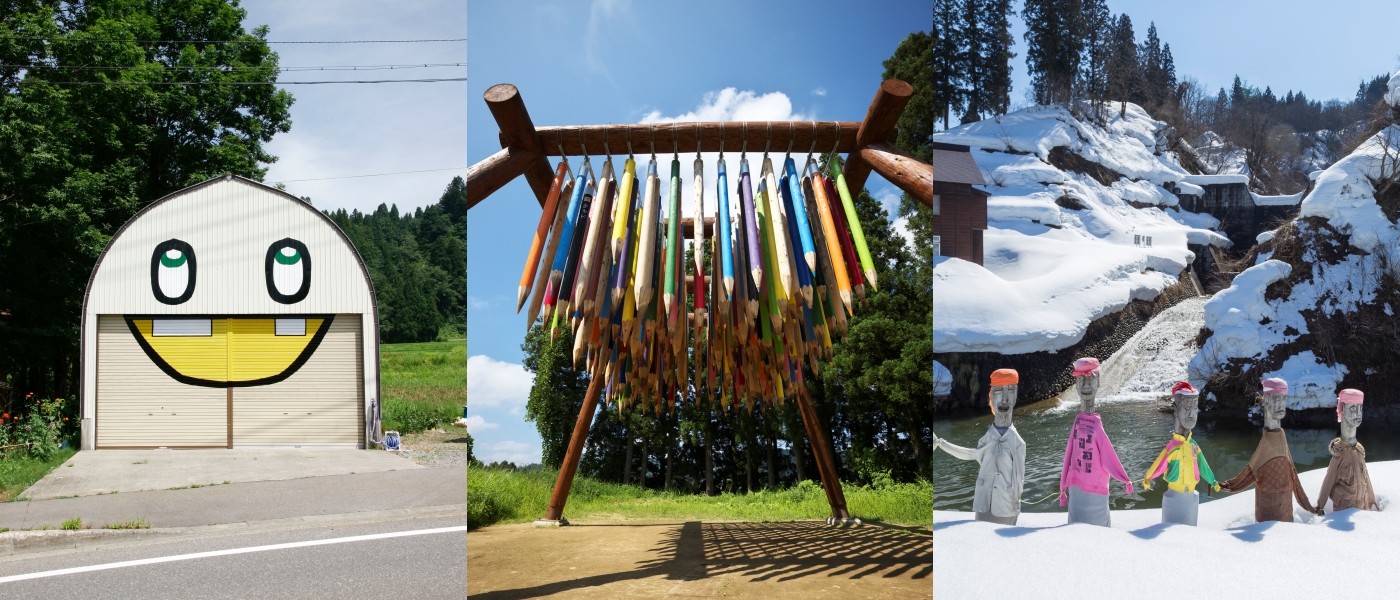
- (Left)【Tokamachi area】Kaihatsu Yoshiaki "Kamaboko Face" Photo: T.Kuratani
2024 release period: Open all year round - (Middle)【Matsushiro Area】Pascal Martin Tailleux “Reverse City” Photo: Takenori Miyamoto + Hiromi Seno
2024 release period: April 27th to November 10th - (Right)【Matsushiro area】Tetsuo Sekine “The boy with red feces has returned” Photo: Nakamura Osamu
Open all year round - *All three works are closed on Tuesdays and Wednesdays, excluding holidays.
Main areas and representative art works + facilities of "Echigo-Tsumari Art Field" as seen from the map
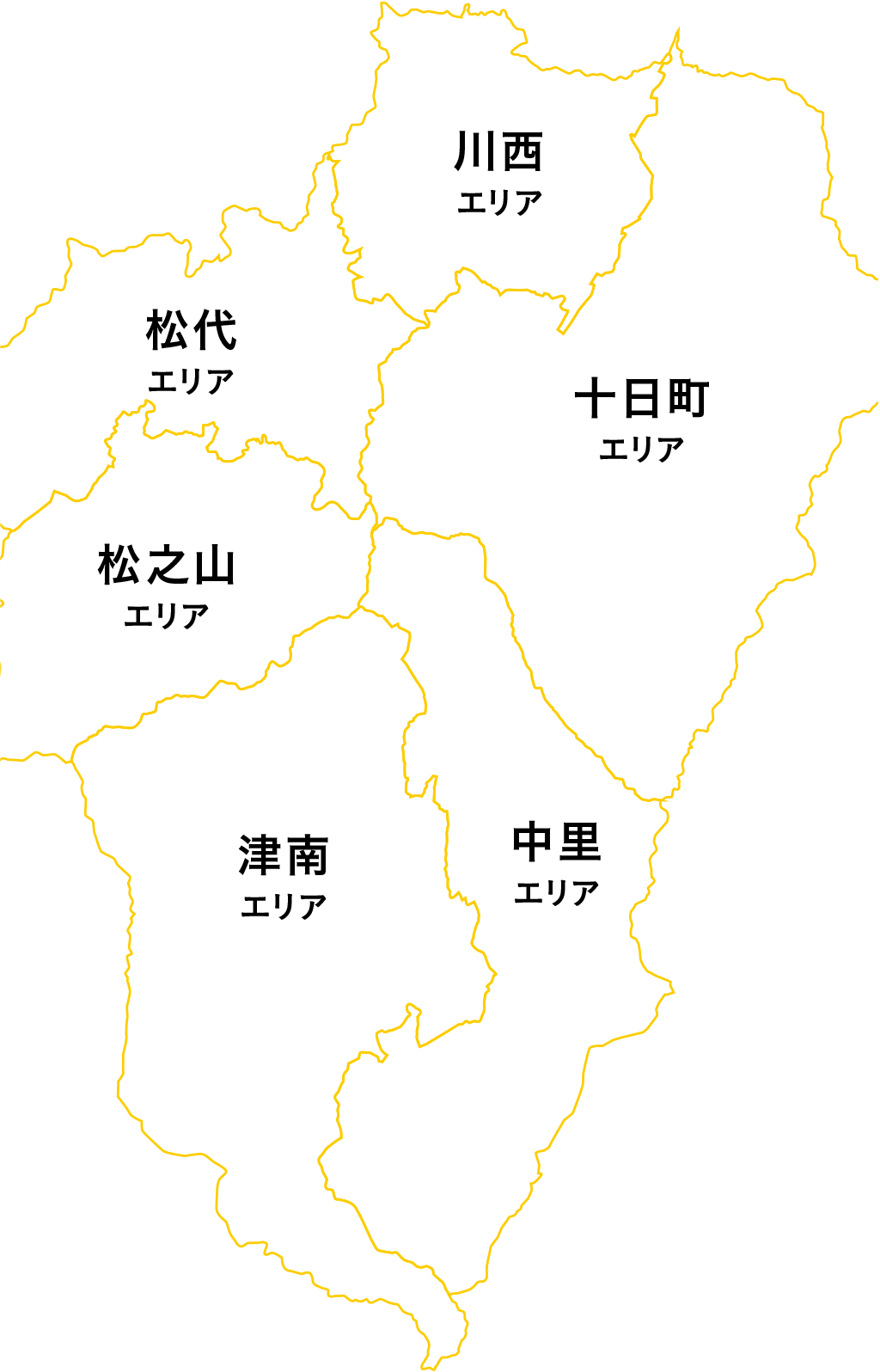
The exhibits at Echigo-Tsumari Art Field are scattered across six areas, so it will take about a week to see them all. In order to make the most of your limited sightseeing time, we recommend planning your trip in advance, focusing on the areas and works of interest.
From here, we will explain the characteristics of each area and the highlights of the five most representative works and facilities.
| Area | Features & Main Works/Facilities |
| Tokamachi | A core area centered on Tokamachi Station on the Hokuetsu Kyuko Hokuhoku Line and JR Iiyama Line. In addition to the "Echigo-Tsumari Satoyama Contemporary Art Museum MonET", which is one of the main facilities within a 10-minute walk, other notable works in this area include the "Hachi & Seizo Tajima Picture Book and Nut Museum", which is a renovated abandoned elementary school. |
| Nakazato | This is an area where the Shinano River, the longest river in Japan, and the Kiyotsu River, a nationally designated scenic spot, flow. One of Echigo-Tsumari's most representative works, "Tunnel of Light", is located in Kiyotsu Gorge, which is considered one of Japan's three major gorges, and the entire Nakazato area is also home to many pieces of art that take advantage of the water-rich environment. |
| Kawanishi | This is an area where full-scale rice cultivation has flourished since ancient times. Representative works include the "House of Light", where the "light" artist combines the beauty of the shadows of Japanese houses with his own light, and the "Matsudai Snow Country Agricultural Culture Village Center "Nobutai" Sign", where the signboards dotted around the area are themselves works of art. |
| Matsushiro | It is a hilly area surrounded by mountains, and has the second highest concentration of artworks after Tokamachi. The "Matsudai NOHBUTAI Field Museum", which is directly connected to Matsudai Station on the Hokuetsu Kyuko Hokuhoku Line, has approximately 40 works of art scattered over a 2km-long woodland area. |
| Matsunoyama | Located on the prefectural border with Nagano, it is a hilly area with an altitude of 200 to 600 meters. It is also the location of Matsunoyama Onsen, which is considered one of Japan's three major medicinal hot springs. Highlights include "Echigo-Matsunoyama Museum of Natural Science “Kyororo”", which is an educational training facility that takes advantage of the natural environment and is also an architectural work, and "The Last Classroom", a masterpiece that uses an entire abandoned school. |
| Tsunan | An area located at the southern tip of Niigata, on the border of Nagano prefecture. It is characterized by a refreshing plateau climate, with cool breezes in the summer and heavy snowfall in the winter. "Kamigo Clove Theatre Restaurant" is famous for its theatrical-style cuisine prepared by local mothers. |
【Tokamachi Area】Echigo-Tsumari Satoyama Contemporary Art Museum MonET
An art museum built as a base for the "Echigo-Tsumari Art Field". There are 15 permanent works on display in the museum, and among them, "Palimpsest: pond of sky" by Argentinian artist Leandro Erlich is a must-see.
Its most distinctive feature is the large pond surrounded by a corridor in the center. In addition to the beautiful architecture designed by one of Japan's leading architects, Koji Hara, you can enjoy Leandro's unique works that have been integrated into it. In addition, there are works that will be released throughout the year, such as "16 Ropes" (bottom left photo) and "Aeriel" (bottom right photo). There is also a museum shop and cafe attached.

Left) Ilya and Emilia Kabakov “16 Ropes” Photo: Kioku Keizo
Right) Nicolas Darro “Aeriel” Photo: Kioku Keizo
- Address: 6-1-71-2 Honmachi, Tokamachi City
- Business hours: 10:00 - 17:00
- Closed: Tuesdays, Wednesdays, year-end and New Year holidays
- Fee:
【Permanent exhibition】Adults 1,000 yen, Elementary and junior high school 500 yen
【Special exhibitions (including permanent exhibitions)】General 1,200 yen, Elementary and junior high school 600 yen - Official website:https://www.echigo-tsumari.jp/travelinformation/monet/
【Nakazato Area】Tunnel of Light (Kiyotsu Gorge Tunnel)
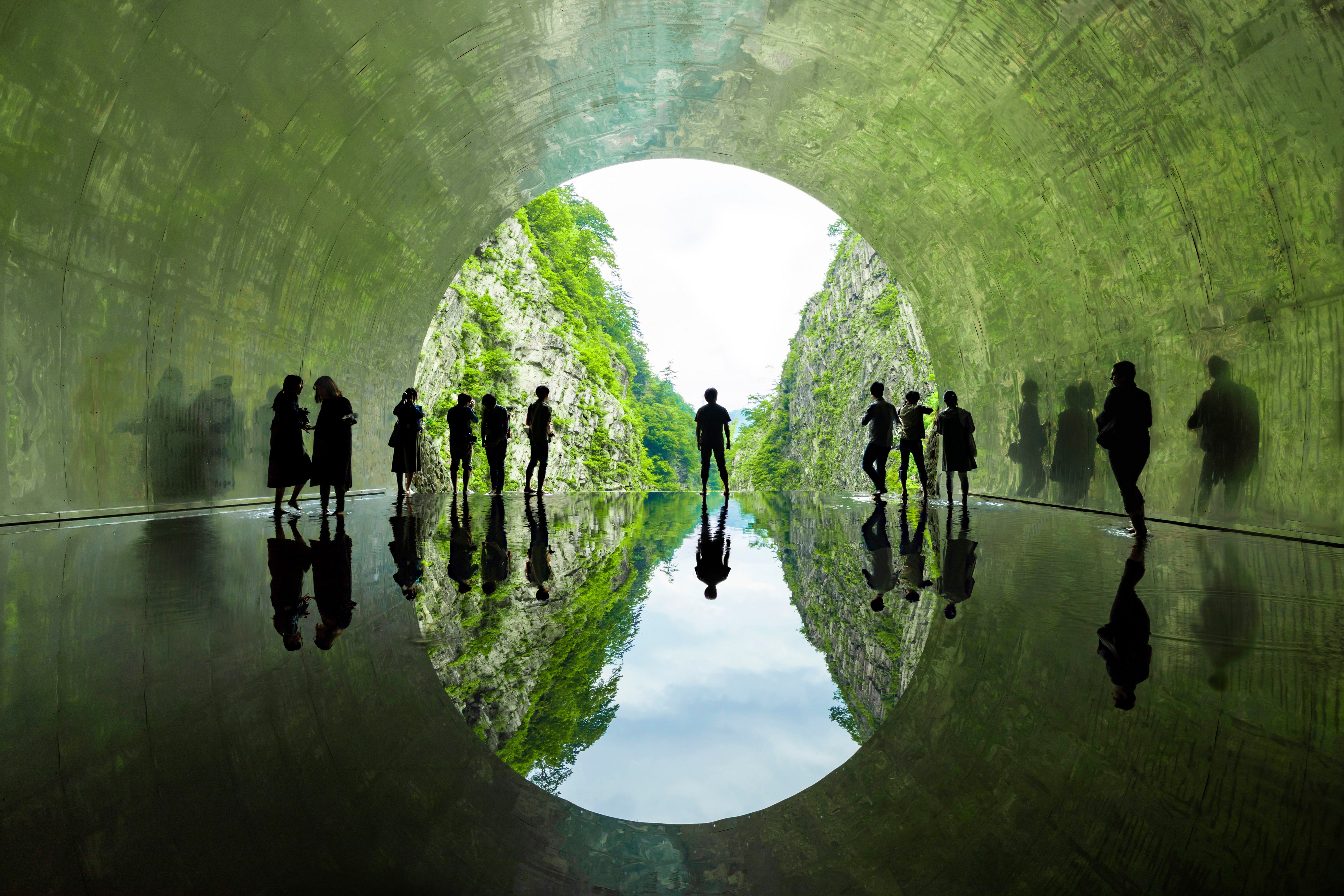
"Tunnel of Light" is an art piece that renovates the interior and entrance facilities of the Kiyotsu Gorge Tunnel using the five elements of nature: wood, earth, metal, fire, and water as motifs. At the end of the tunnel, you will find a space that reflects the seasonal canyon inside the tunnel. The semi-mirror-finished stainless steel plates on the ceiling and the water in the shallow pool create a fantastical world.

- Address: 2119-2 Koideki, Tokamachi City
- Business hours:
【March 1st - November 30th】08:30 - 17:00
【December 1st - the end of February】09:00 - 16:00 - Fee: General 1,000 yen, Elementary and junior high school 400 yen
- Official website: https://nakasato-kiyotsu.com/
【Kawanishi Area】House of Light
The "House of Light" is an accommodation facility where you can experience the fantasy of American light artist James Turrell. In the Japanese-style room with a movable roof, the synergistic effect with the lighting allows you to watch the changing colors of the sky after sunset to your heart's content. In addition, optical fibers are installed in the bath, alcove, and bedroom, allowing you to enjoy a bathing experience like no other while being surrounded by fantastic light.
- Address: 2891 Uenoko, Tokamachi City (Nakago Green Park)
- Business hours:
【April 1st - October 31st】12:00 - 15:30
【November 1st - March 31st】11:30 - 15:00 - Closed:
【December 1st - the end of February】Tuesdays, Wednesdays, 【March】Wednesdays, year-end and New Year holidays, and other temporary closing days - Fee: 600 yen for junior high school students and above, 300 yen for elementary school students
*Accommodation fee is separate - Official website: https://www.hikarinoyakata.com/
【Matsushiro Area】Matsudai NOHBUTAI Field Museum
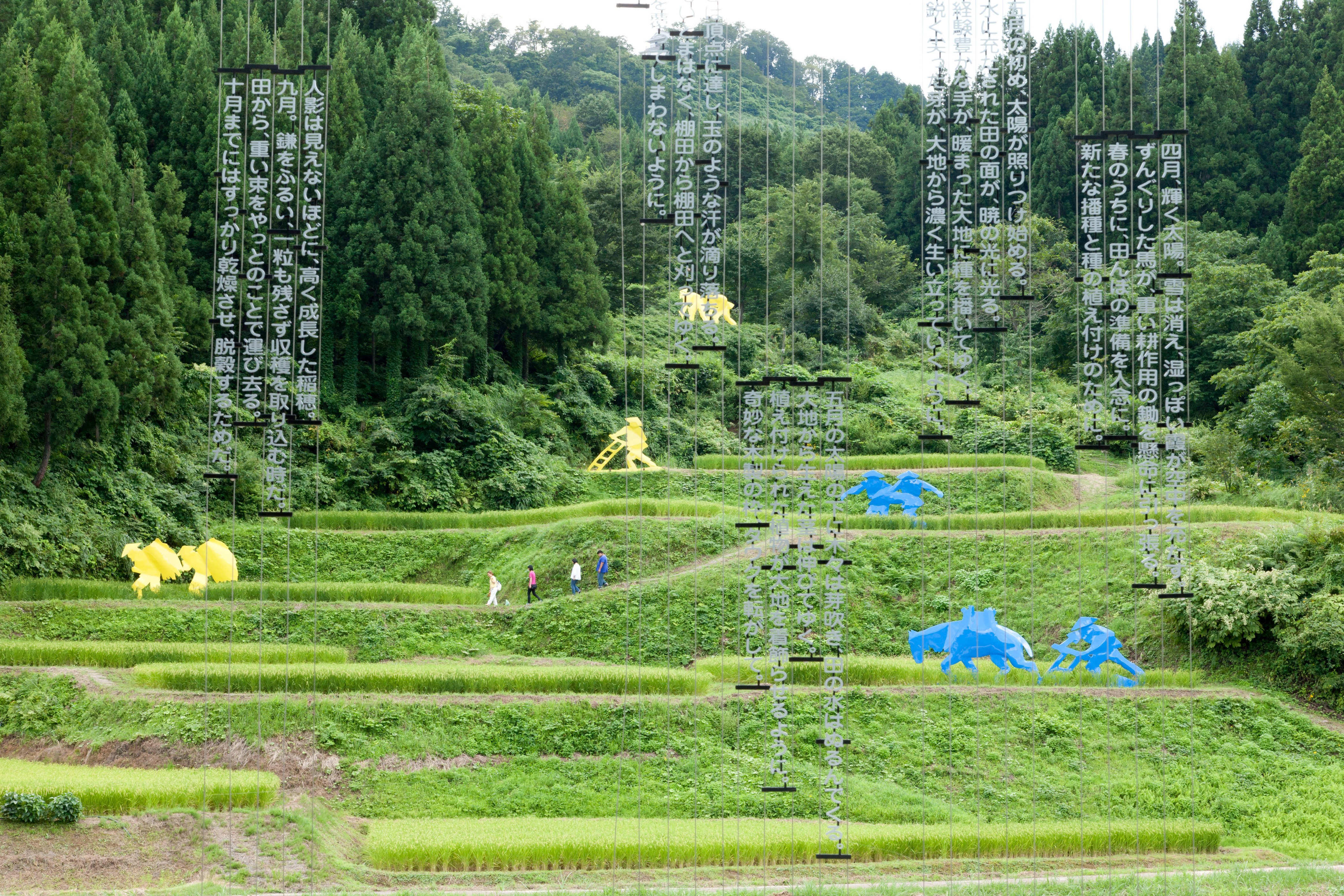
Ilya and Emilia Kabakov "Rice Terrace"
Photo: Nakamura Osamu
The "Matsudai NOHBUTAI Field Museum" allows you to experience art, food, and agriculture throughout the approximately 2km-long village forest from Matsudai Nohbutai to Matsushiro Castle. You can view the original landscape of the rice terraces along with approximately 40 works by world-famous artists, including Yayoi Kusama's ``Flowers in Bloom in Tsumari'' (lower left photo) and Koichiro Higashi's "Rotating Absence".

Left) Yayoi Kusama “Flowers in Bloom in Tsumari” Photo: Nakamura Osamu
Right) Koichiro Higashi “Rotating Absence” Photo: Kioku Keizo
- Address: 3743-1 Matsushiro, Tokamachi City
- Business hours: 10:00 - 17:00
- Closed: Tuesdays, Wednesdays, New Year holidays
- Fee:
【Matsudai NOHBUTAI Field Museum】General 1,200 yen, Elementary and junior high school 600 yen
【Individual viewing ticket (shared local museums)】General 600 yen, Elementary and junior high school 300 yen - Official website: https://matsudai-nohbutai-fieldmuseum.jp/
【Matsushiro Area】Shedding House

The "Shedding House" is an old folk house that was built over 150 years ago and has been reborn as a work of art, with carvings placed all over the floor, walls, pillars, and other areas. Located in the Hoshitoge village, which is famous for its terraced rice fields built on a slope in the mountains, you can enjoy a panoramic view of the changing seasons from the round windows that open on all sides. This accommodation can only accommodate one group per day and can accommodate up to 8 people.
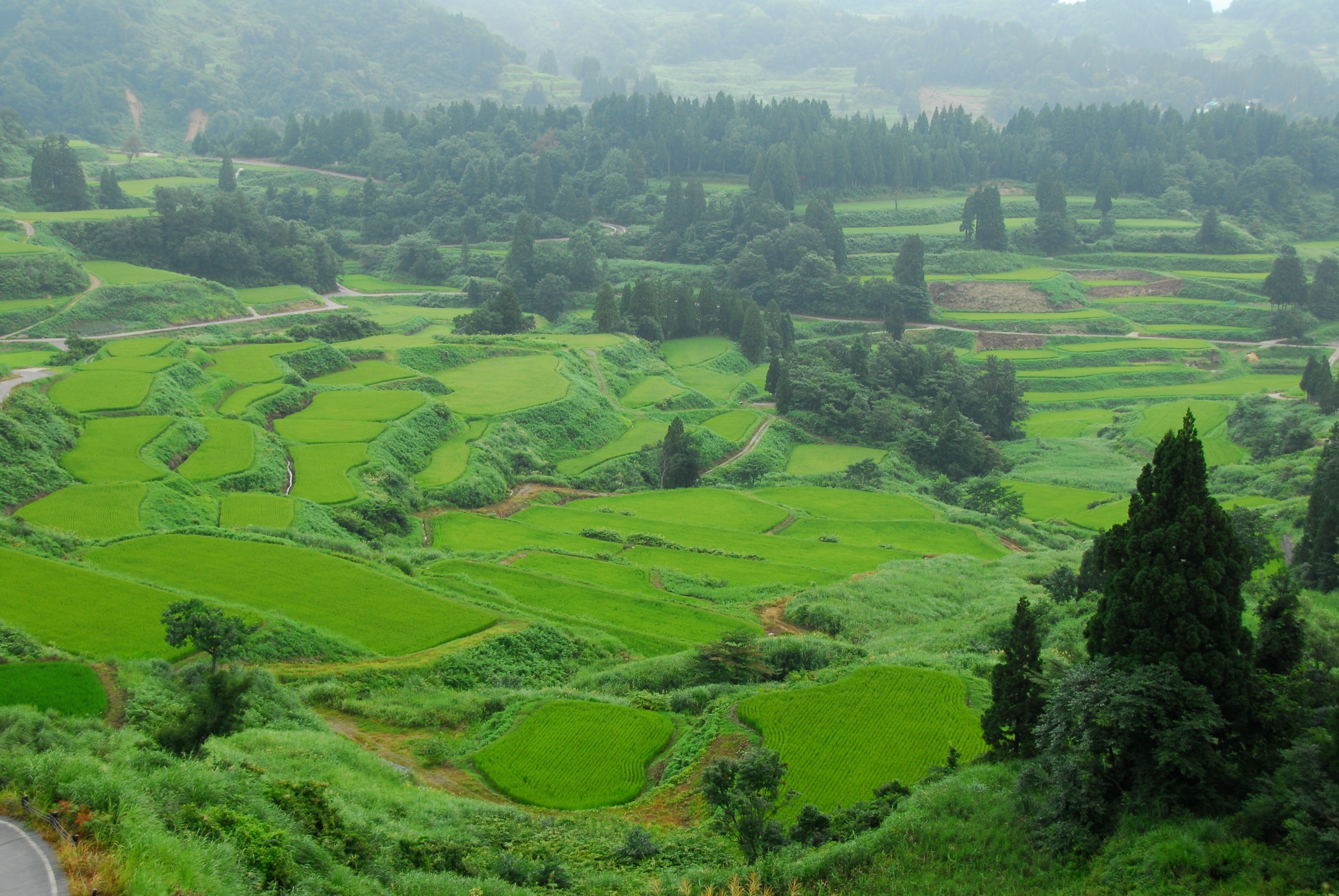
- Address: 776 Tokamachi Toge
- Available accommodation period in 2024: April 26th to November 10th
- Closed: Tuesday, Wednesday
- Fee:
【Tour fee】Adults 300 yen, elementary and junior high school students 150 yen
【Accommodation fee】Facility usage fee: 22,000 yen + 3,300 yen for adults, 1,650 yen for elementary school students, 1,100 yen for infants - Official website: http://www.tsumari-artfield.com/dappi/index.html
There are three main means of transportation for "Echigo-Tsumari Art Field"!
The Echigo-Tsumari Art Field is held in an extremely large area, so the key point is how efficiently you can travel through the six areas.
Other than Echigo-Tsumari Satoyama Contemporary Art Museum MonET and Matsudai Nohbutai, both of which are within walking distance from the station, it is common to travel to artworks and facilities by bus tour, rental car, or bicycle. Compare the characteristics of each means of transportation and choose the one that best suits your needs.
Bus Tour
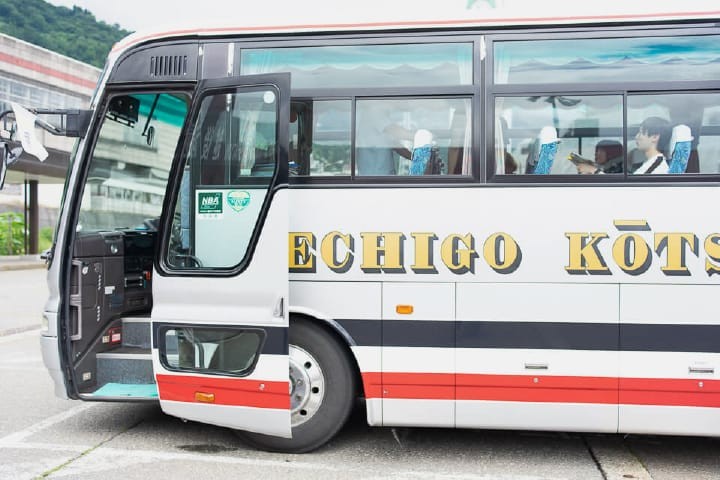
If you want to easily explore the vast area, we recommend taking a bus tour that departs from Echigo-Yuzawa Station. The attraction is that you can enjoy explanations of the works by the guide (only available in Japanese) and the ability to view works that are only available to the public on tours.
Dates vary depending on the tour, so please check the official website for the latest application acceptance information.
Rental Car
Renting a car is the best way to get around freely and efficiently.
There are several rental car stores around Tokamachi Station and Echigo-Yuzawa Station, so if you want to see as many works as possible, rent a car at your base station.
Rental Bicycle
If you want to focus on seeing works in the city or around the station, we recommend renting a bicycle.
Tokamachi City General Tourist Information Center Tocco, located inside Tokamachi Station on the Hokuetsu Express Hokuhoku Line, rents out electric bicycles (1,000 yen for 4 hours, 1,500 yen for 1 day) and assisted bicycles (1,500 yen for 4 hours, 2,800 yen for 1 day). It runs from late April to November.
“Echigo-Tsumari Art Triennale 2024” will be held!
The "Echigo-Tsumari Art Field" is well worth seeing with the works that are open to the public all year round, but the main festival "Echigo-Tsumari Art Triennale", which is held once every three years, includes content that can only be experienced during the festival period, allowing you to enjoy even more content.
"Echigo-Tsumari Art Triennale 2024", which will be held for the 9th time in 2024, will be held from July 13th to November 10th. 72 artists and projects from 17 countries and regions are scheduled to participate, and approximately 300 works, including new works, will be exhibited. In addition, multiple official tours are held, and you can dine and stay overnight at the facilities where the works are located.
Examples of new works from “Echigo-Tsumari Art Triennale 2024”

- (Left)【Kawanishi Area】“Nakago Green Land – Breath and Rebirth of Animals (tentative)”
- (Middle)【Matsushiro Area】Ma Yansong / MAD Architects “Wild Foam (tentative)”
- (Right)【Matsunoyama Area】Aisha Erkumen “in and out”
“Echigo-Tsumari Art Triennale 2024” How to purchase a passport for viewing artworks
You can purchase a real ticket or a voucher online, at sales offices in and outside of Niigata Prefecture, and at multimedia terminals at convenience stores nationwide. If you purchase a voucher, you can exchange it for a real voucher at the designated redemption location. Works such as "Kiyotsu Gorge Tunnel" that are not eligible for passports (passport presentation discounts available) require a separate viewing fee.
- 【Advance sale】General 3,500 yen, Elementary, junior high and high school 1,000 yen
- 【On the day】Adults: 4,500 yen, Elementary, junior high and high school students: 2,000 yen
Echigo-Tsumari Art Triennale 2024
- Event period: July 13th to November 10th, 2024
- Hours: 10:00 - 17:00 (10:00 - 16:00 from October to November)
- Closed: Tuesdays and Wednesdays (some production facilities are open as usual)
- Example of access to Echigo-Tsumari:
【Railway】Take the JR Joetsu Shinkansen to Echigo-Yuzawa Station, then take the Hokuetsu Express Hokuhoku Line to Tokamachi Station, about 35 minutes.
【Airplane】Take a limousine bus from Niigata Airport to JR Niigata Station, then take an Echigo Kotsu bus to Tokamachi Shako-mae for about 2 hours and 30 minutes. - Official site: https://www.echigo-tsumari.jp/
- Instagram:https://www.instagram.com/echigo_tsumari/
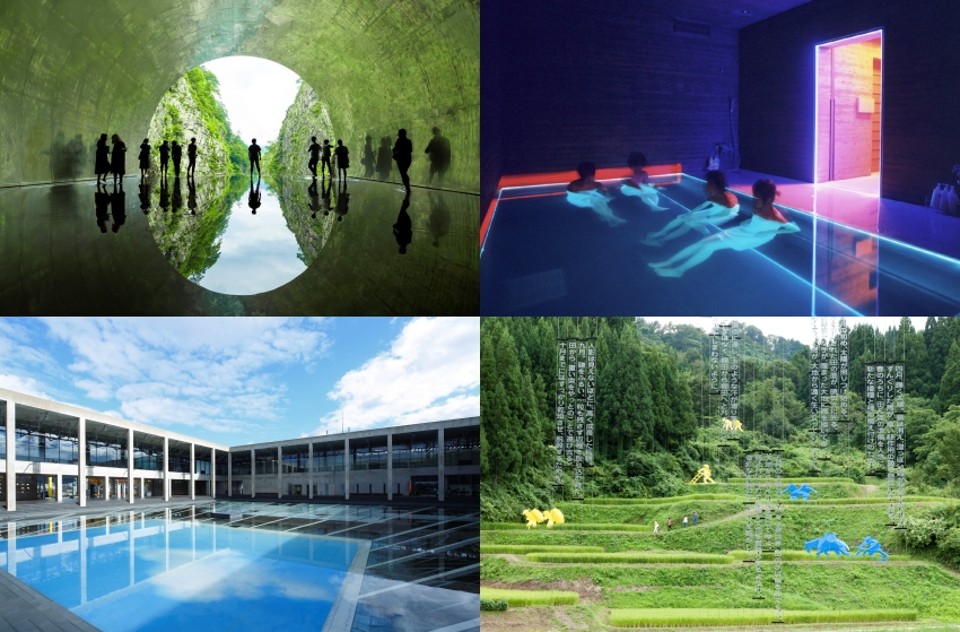
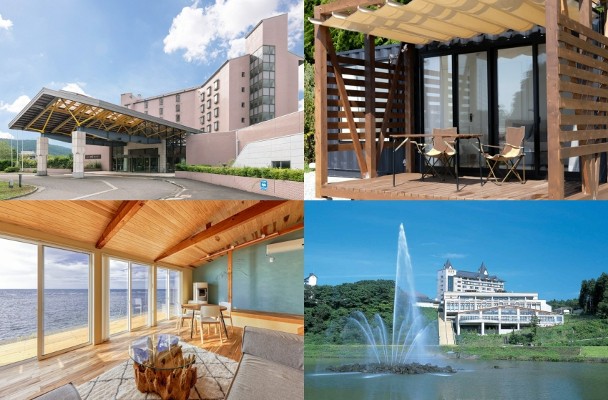
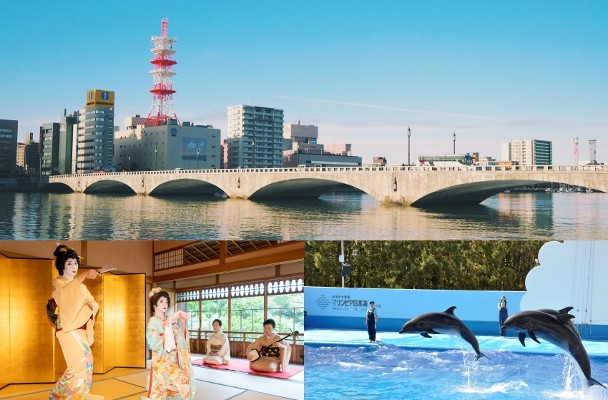
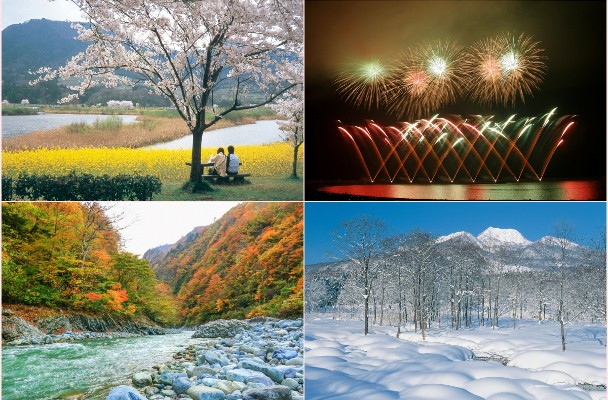
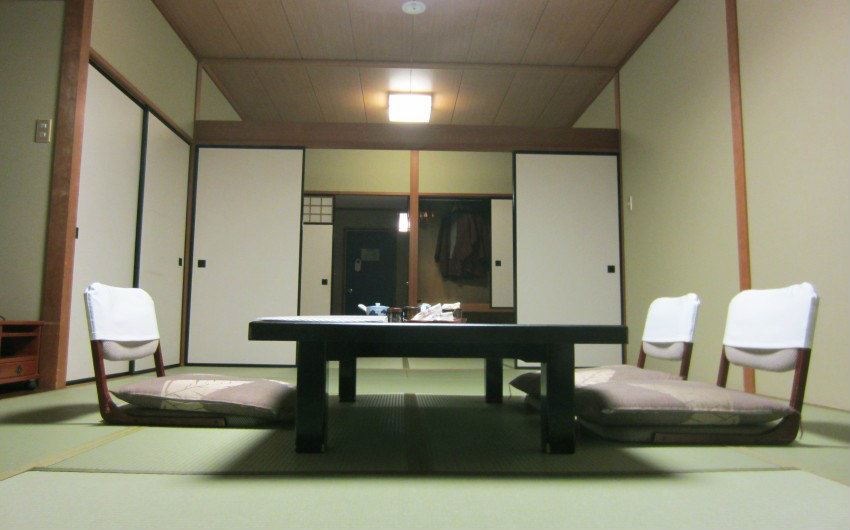
Comments